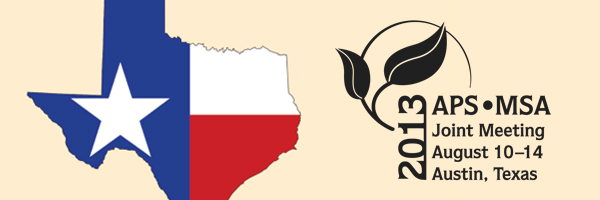APS Homepage
Back

Poster Presentation: Risk Assessment
© 2013 by The American
Phytopathological Society. All rights reserved.
563-P
Influence of environmental factors on aerial concentrations of Pseudoperonospora cubensis sporangia and cucumber downy mildew disease severity.
L. GRANKE (1), J. Morrice (1), M. VanOverbeke (1), G. Carnago (1), A. Pianosi (1), M. K. Hausbeck (1)
(1) Michigan State University, East Lansing, MI, U.S.A.
Aerial concentrations of Pseudoperonospora cubensis sporangia (sporangia m-3) were monitored 0.5 meters above the soil surface from May to late Sept/early Oct 2010 and 2011 in unsprayed cucumber fields at research farms in Frankenmuth and Benton Harbor, Michigan. Cucurbit downy mildew incidence and severity were evaluated weekly within each field from Jun until Sept/Oct. The first airborne sporangium was detected within five days of trapping initiation for each site-year. The greatest airborne sporangia concentrations were detected when moderate to high disease severity (>5% foliage covered) was detected within the field, fewer airborne sporangia were detected with low disease severity (<5% foliage covered), and the lowest airborne sporangia concentrations were detected prior to planting the cucumber crop. Using the combined dataset for both sites and years, it appeared that airborne sporangia concentrations, plant age (weeks post planting), cumulative solar radiation, and average temperature were the key factors that determined whether or not infection occurred. Michigan growers currently use an aggressive, calendar-based fungicide program to manage cucumber downy mildew. By better understanding the key factors that influence cucumber downy mildew disease onset, we can work toward developing an effective fungicide program that allows for fewer fungicide applications on the developing cucumber crop.